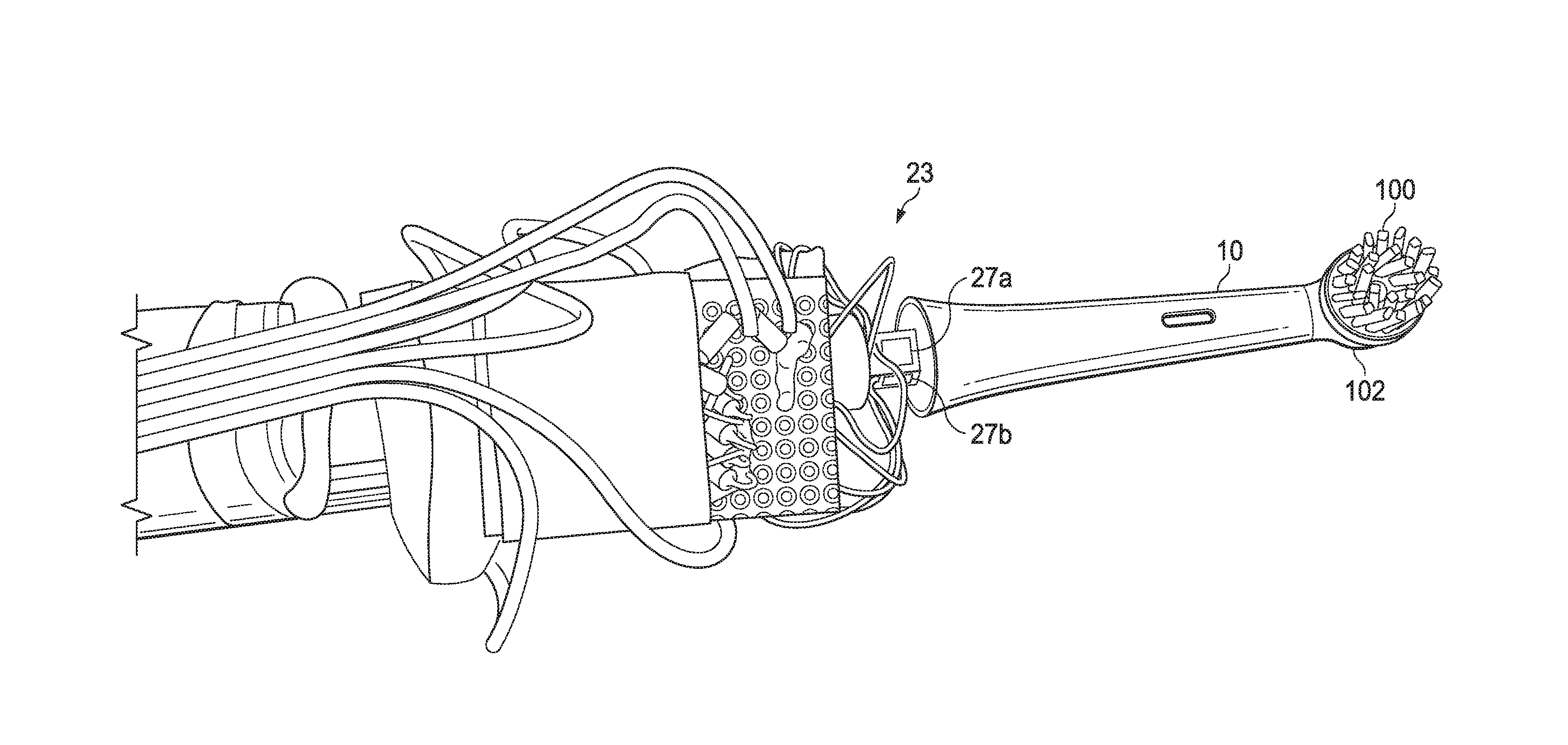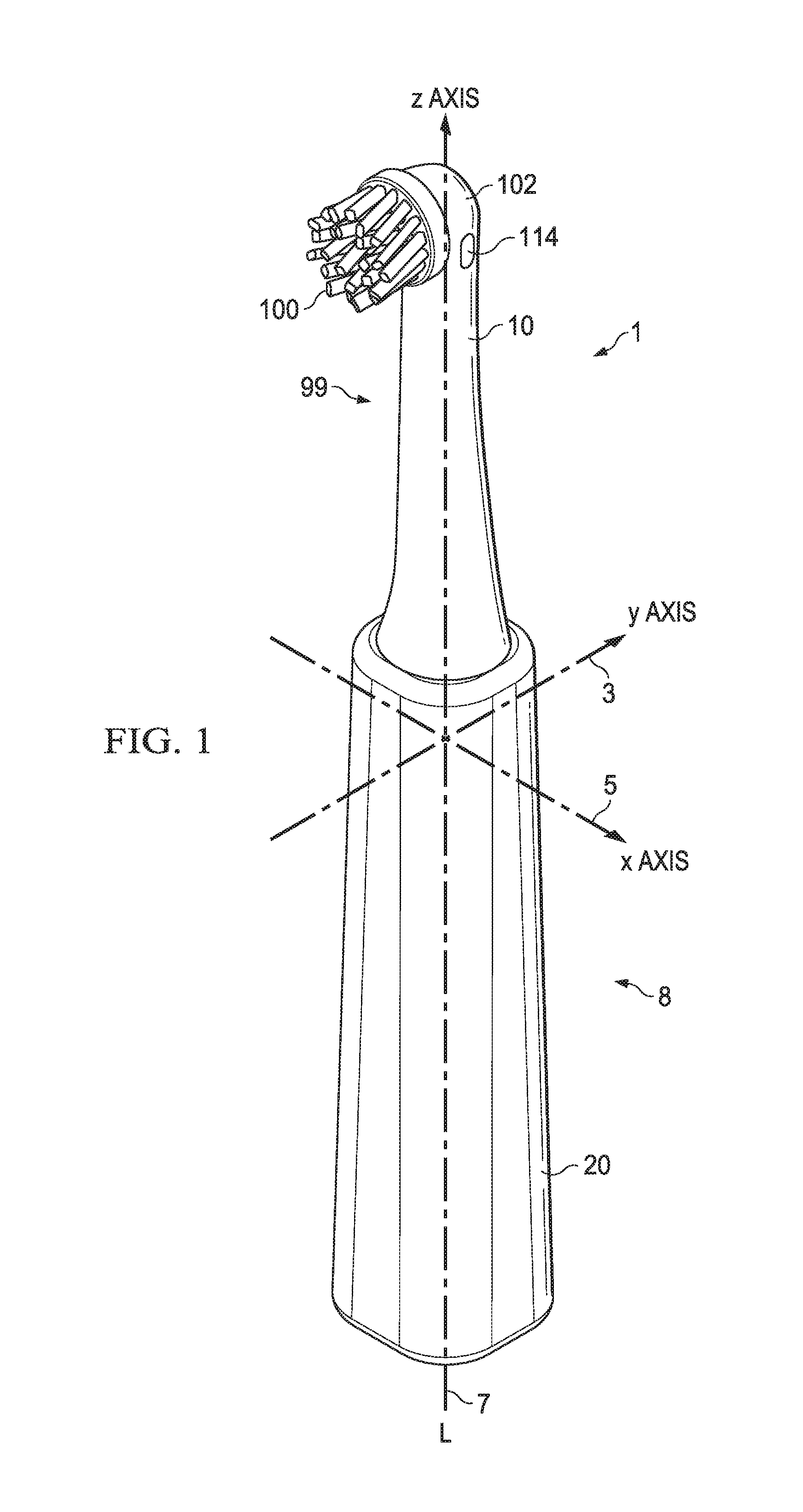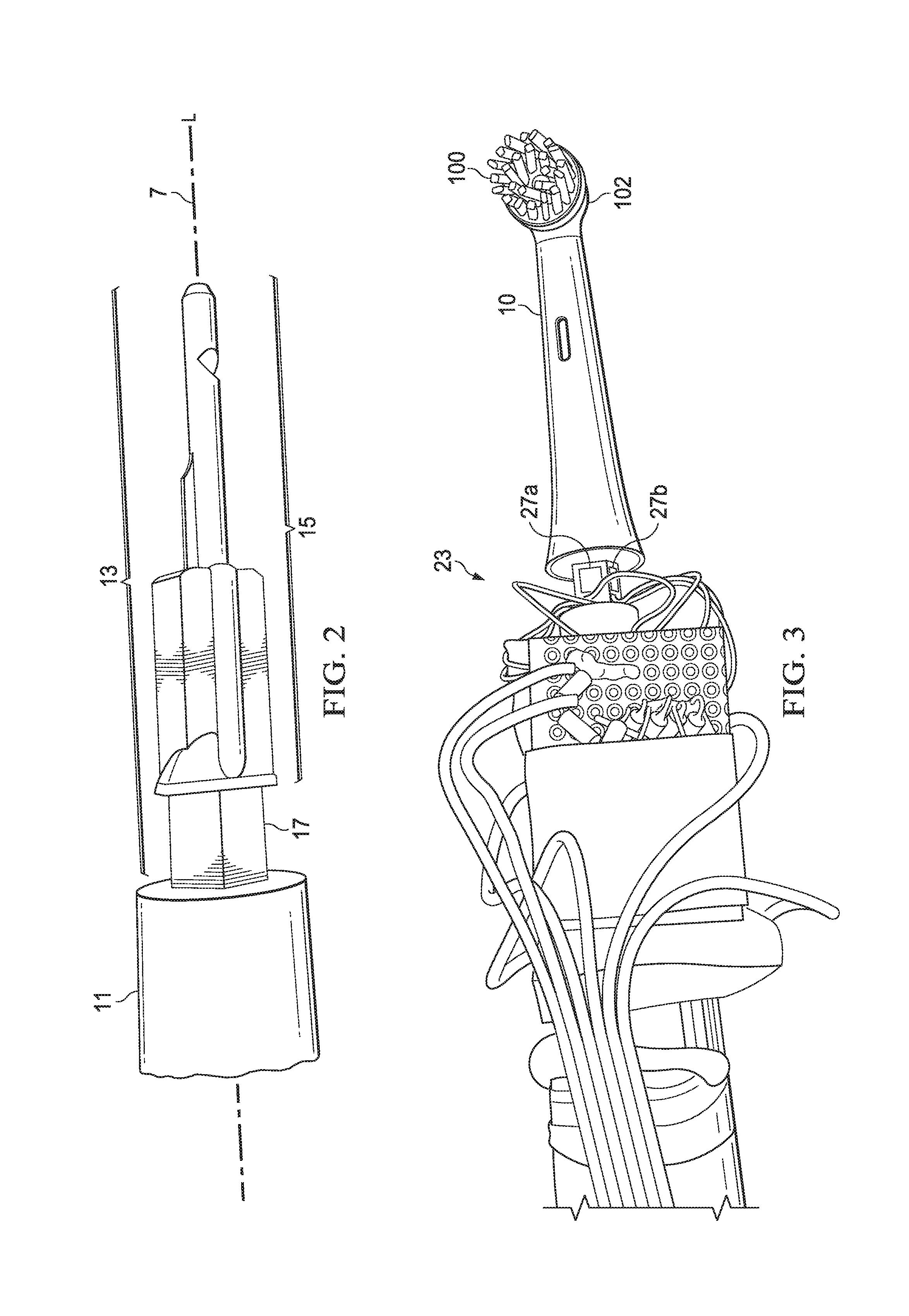Toothbrush for oral cavity position detection
a technology for teeth and electric toothbrushes, which is applied in the field of detecting the position of teeth in the oral cavity of electric toothbrushes, can solve the problems of difficult for users to find the right balance, gum irritation, gum recession, etc., and achieve the effect of accurately measuring the typical brushing force, cost and simplicity, and improving the overall detection accuracy
- Summary
- Abstract
- Description
- Claims
- Application Information
AI Technical Summary
Benefits of technology
Problems solved by technology
Method used
Image
Examples
example 1
[0074]The following examples are provided using an electric toothbrush of the present invention. Reference is made to FIG. 6, and the 18 tooth zones (i.e., a-r). The electric toothbrush of the example has a head wherein the bristles are orthogonal to the longitudinal access. In example 1, the head of the electric toothbrush is inserted into the mouth as indicated in FIG. 7a, and the brushing operation is started in so called tooth zone j (out of 18 tooth zones). FIG. 7b shows the direction of the forces applied by the cheek on the head of the replaceable toothbrush head. The user has to push the cheek away with the head to move to the left part of the mouth, creating a normal bending force on the refill in the right direction as illustrated in FIG. 7b. The next step is moving the head down to reach zone j (and not zone a). This creates a lateral bending force going up. The combination of this 3-axis force sensor data coupled with the 3-axis accelerometer and gyroscope data indicate ...
example 2
[0075]Example 2 illustrates when a user starts in tooth zone k. When a user starts in tooth zone k, the cheek or the impact on the teeth will apply a little force on the refill in the direction shown in FIG. 8. Because a lateral bending force is detected, no normal force from the cheek and also 3-axis accelerometer and gyroscope data indicating the bristles are facing down, the starting oral cavity position is tooth zone k.
PUM
 Login to View More
Login to View More Abstract
Description
Claims
Application Information
 Login to View More
Login to View More - R&D
- Intellectual Property
- Life Sciences
- Materials
- Tech Scout
- Unparalleled Data Quality
- Higher Quality Content
- 60% Fewer Hallucinations
Browse by: Latest US Patents, China's latest patents, Technical Efficacy Thesaurus, Application Domain, Technology Topic, Popular Technical Reports.
© 2025 PatSnap. All rights reserved.Legal|Privacy policy|Modern Slavery Act Transparency Statement|Sitemap|About US| Contact US: help@patsnap.com



